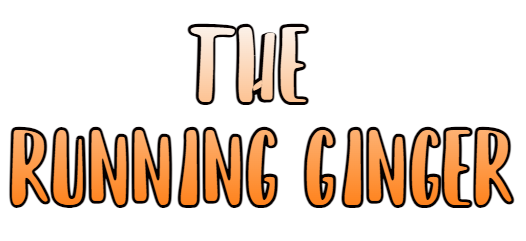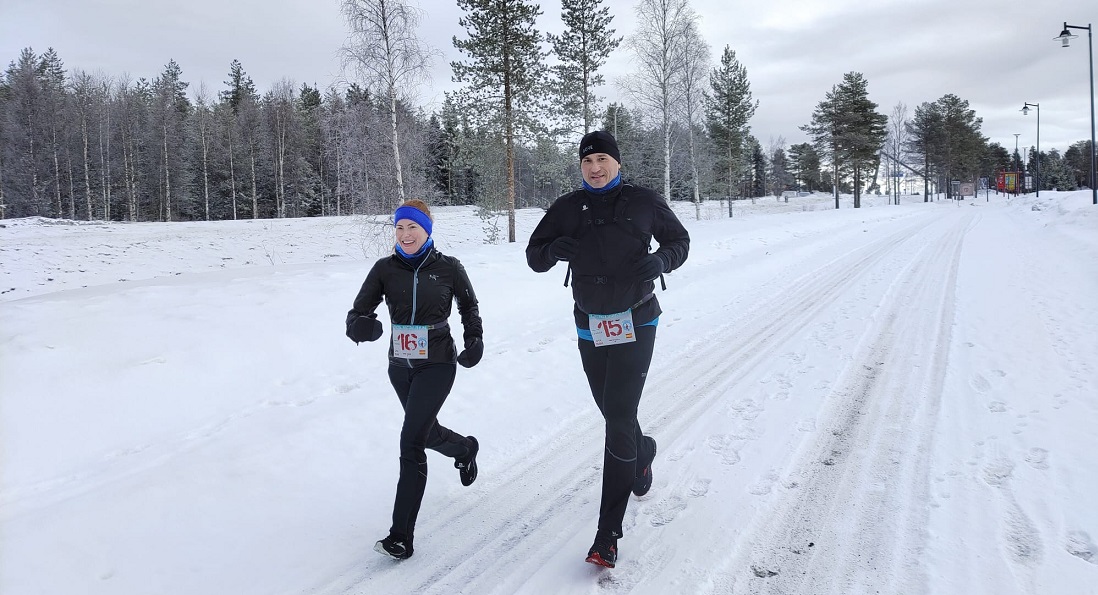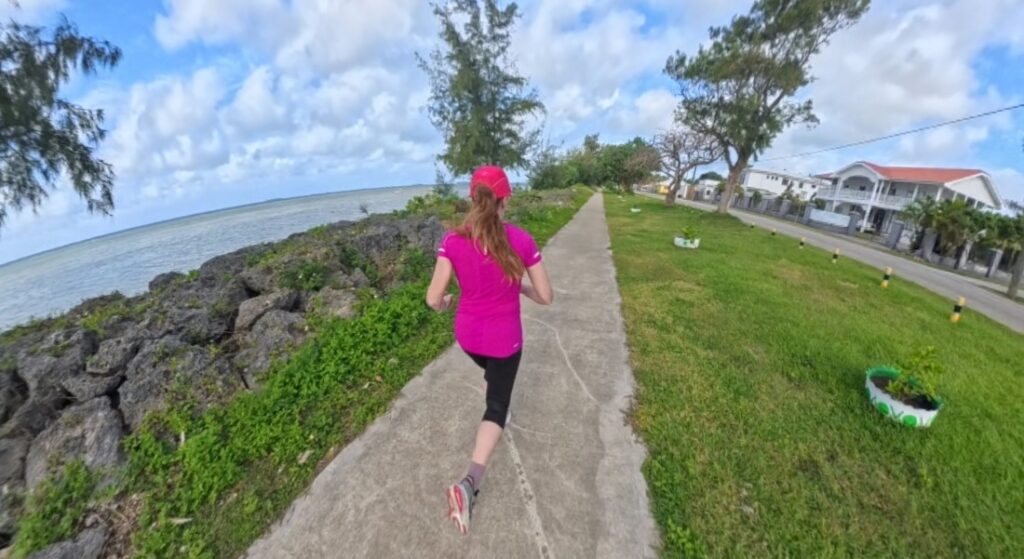Artic Marathon Finland. Rovaniemi, Lapland. April 2022.
We ran on snowy paths through coniferous forests at minus ten below zero… with elves at the aid stations and Santa Claus hanging the medal in your neck. This is the Rovaniemi Arctic Marathon!
TLDR; “too long, didn’t read”
- I just want to run! Take me to RACE.
- Running is my excuse for travelling. Take me to TRIP.
- Running is my excuse for eating. Take me to CARBOLOADING.
- I only have 1 minute. Take me to USEFUL INFORMATION.
- I want to know what to read in the plane. Take me to ONE BOOK.
🌍 The trip 📷
Finnish author Sofi Oknasen writes that “snow is silence made visible”, and, although Rovaniemi has become a theme park, it is still nestled in an unforgettable environment full of visible silences.
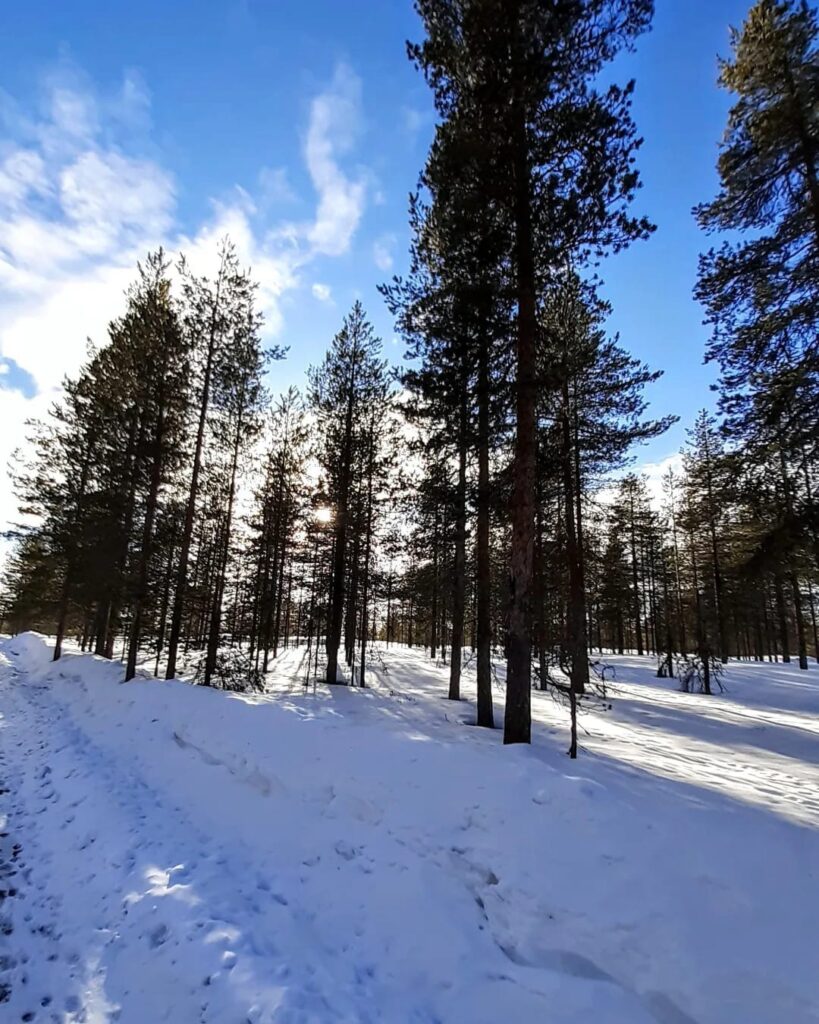
We ran the first edition of the Artic marathon in February 2022.

We were just coming out of the hard time of COVID, which reduced participation to around 20 runners, among those who chose the full marathon, those who chose the half marathon and those who chose the 10K.
The race is organized by “Wild Marathon”, a Spanish agency that customizes the trip with activities and takes care of every detail. Special mention deserves its owner and expedition guide, Apolo Esperanza, a very experienced runner who works hard to make sure everything goes well.
We flew from Barcelona, and to get to Lapland we made only one stopover, in Helsinki.
In fact, Rovaniemi is very well connected thanks to the large number of tourists it receives on Christmas days.
Nothing better than the words of Sofi Oknasen in her novel “Stalin’s Cows” to define what is experienced there:
Santa Claus had always been a secondary character in Finnish culture, but now he was everywhere, in every store. and in all the television commercials
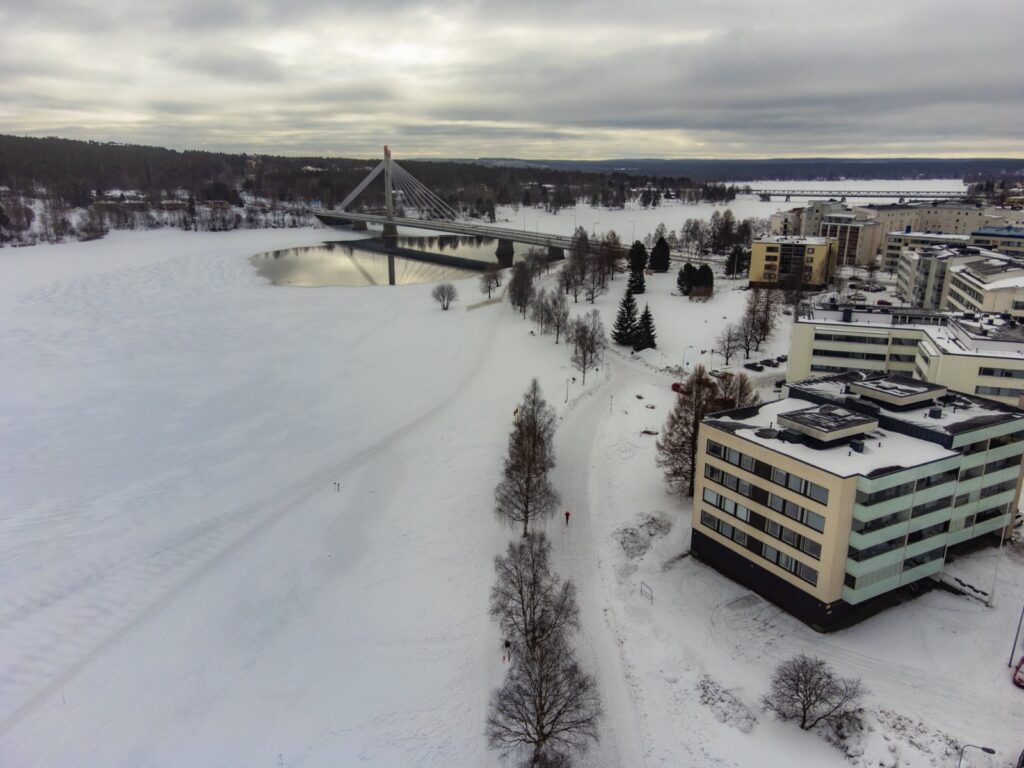
Even at the buffet, among pastries, potatoes, apples or yogurt, there are figures of elves; as well as lamps made from reindeer antlers, and profusely decorated Christmas trees.
📅 The Race Briefing 🎽
The Race Brief took place in one of the “Santa Claus Village” buildings. And it followed the same “Xmassy” tone.

There was a guy dressed as an elf doing funny things, while Apollo showed us a map and told us how everything was going to work.
As merchandise, they gave us some nice jackets and compression socks with the marathon logo, and we started socializing with each other.
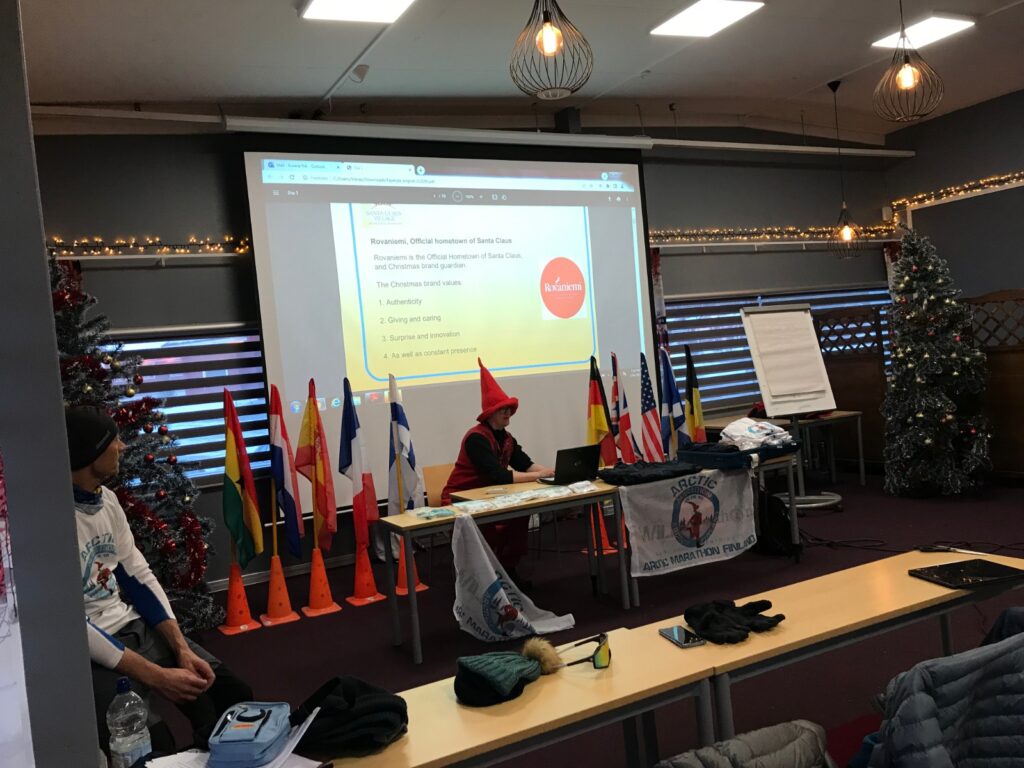
Since there were not many of us, a very nice and very international group was formed. There were Germans, British, Dutch, French… The camaraderie endures years later, with a WhatsApp group in which races and training sessions are shared.
The good organization was evident in the location itself.
You stay in the “Santa Claus Village” itself, in comfortable bungalows that even have their own sauna.

Also in the restaurant and the complete breakfast buffet, and later, in the activities organised:
An outing with a sled pulled by huskies and a reconnaissance lap around the terrain where they were going to run the day after.
The Huskies
We really enjoyed the activity that allowed us to drive a Husky Sledge. The dogs were amazing!

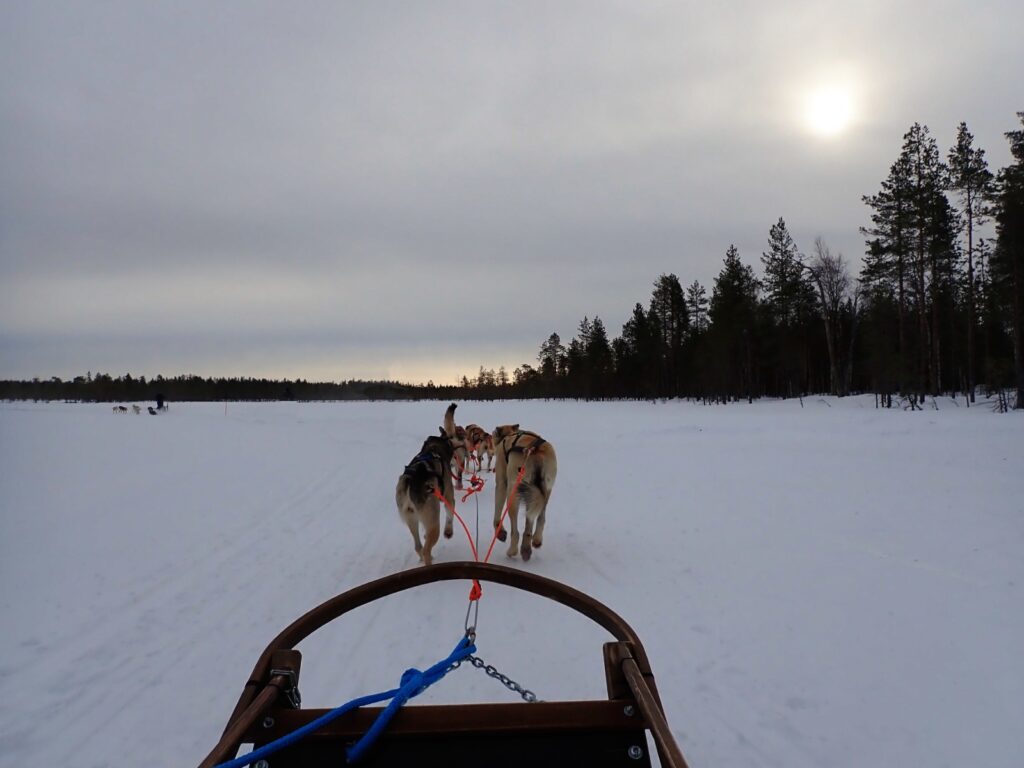
🏃♀️ The race 🏃♂️
The start
The thermometer in the “Santa Claus Village” plaza read minus nine degrees below zero when we set off.
The surrounding buildings, whether the “three elves restaurant” or “the Christmas house”, were illuminated with fluorescent colors, and the elf from the “race brief” continued cheering with the same impetus as the day before.
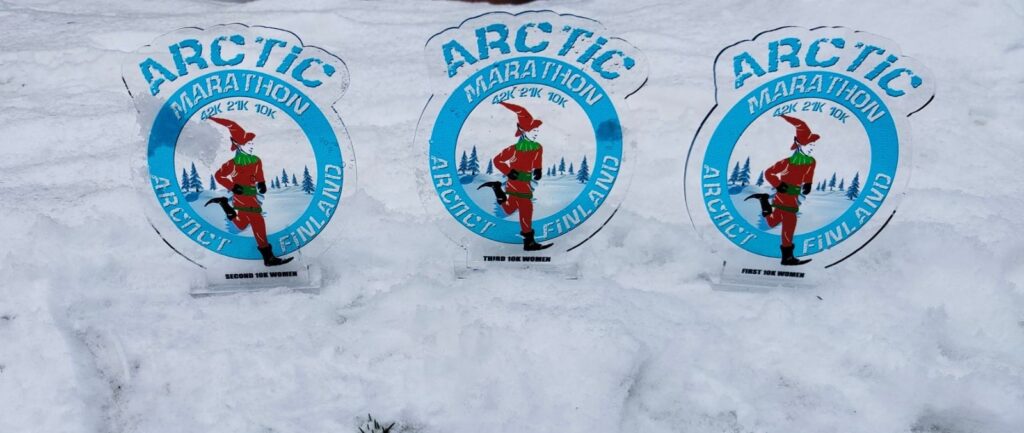
The departure and arrival had been organized right in the middle of the square, where a webcam records images at all hours, every day of the year.
Curiously, at such a low temperature we felt less cold than in other races in arctic climates, since the air was drier than what we had experienced in Greenland or on a frozen lake in Norway.
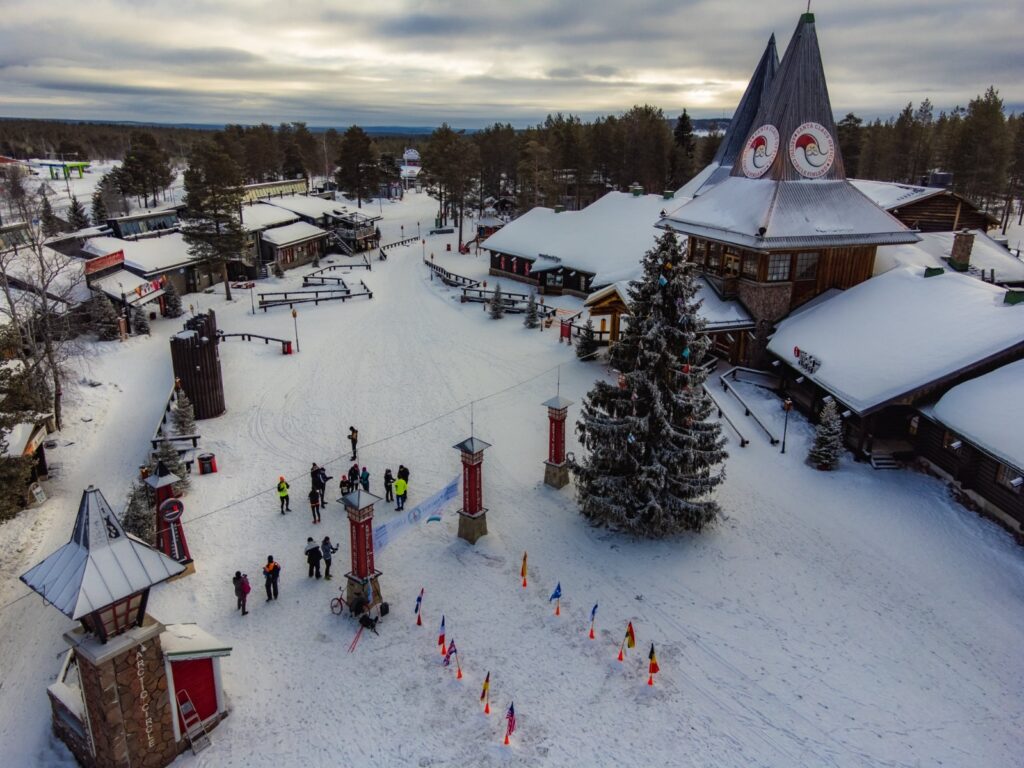
Setting off
We were bundled up in the same gear: three top layers, two bottom layers, gloves, mittens, hats, and neck buffs.
On this occasion we chose the lightest crampons, two millimeters, since we did not anticipate facing too many icy sections.
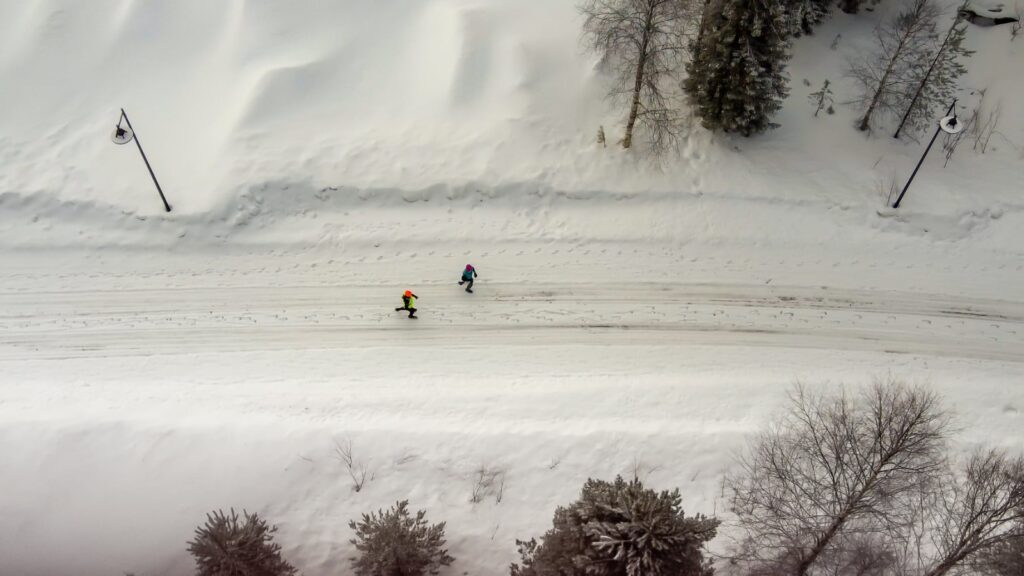
The first kilometers of the race ran along a demanding but very beautiful circuit. Some areas had several centimeters of snow between forests of fir, pine and birch trees.
There was the occasional slope where the amount of snow made it difficult for you to climb.
Throughout the race there was an accumulated difference in altitude that did not reach two hundred meters. So the biggest difficulty was the cold. We were above the Arctic Circle, afterall.
Around kilometer 7 we entered snow-covered forest roads, and arrived at the next aid station in the middle of the forest.
Second part of the race
Here the 10k runners were turning around. The rest of us continued to reach the town of Rovaniemi, which we reached by crossing the Ounasjoki River.
We passed the other river, the Kemijoki, until we reached a refreshment post under the magnificent suspension bridge, “the lumberjack’s sail”. The first built in Lapland.
There we found volunteers dressed in large pointed red hats and ready smiles, who asked us where we came from between sips of warm drink.

The almost total absence of other runners and the contact with nature made the race a beautiful experience.
It was “like meditating in movement”, as the Finnish Tuomas Kyrö wrote.
We were very lucky because the sun was splendorous, highlighting the contrasts and creating an illusion of a fabled forest.
The last kilometers
The last kilometers were uphill, the gradient of which added to the fatigue accumulated in the legs.
Once again Sofi Oksanen expresses it perfectly when she writes that “memory is also found in the muscles and bones, in sweat and fatigue”… so I consoled myself by thinking that I would engrave the last slopes in the memory of my muscles.

The finish line awaited us in the center of the square.
The thermometers readed a few degrees below zero. And there was an entrance decorated with two rows of flags of the participants’ countries.
And Santa Claus “in person” giving out medals and trophies!
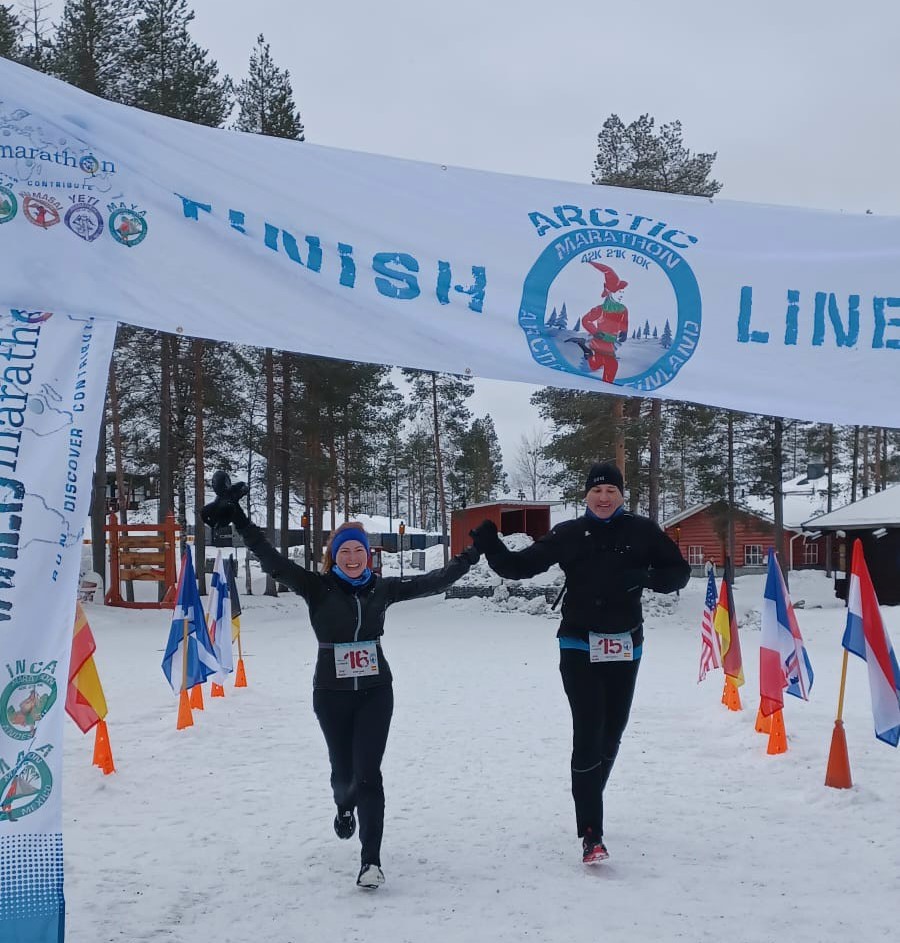
An especially exciting moment was when one of the participants completed her first marathon here, and her feat was celebrated by everyone in the group with cheers and even tears.

At night, with our medals around our necks, we walked through the fresh snow, which had been falling while we recovered from the race.
We went out to see the magic of the northern lights, in the middle of the snow made silence, broken by the crunch of our boots. And we saw some blurred opal-colored rivers:

Anyway, we decided we would come back, some day. This race deserves it!
🍜 Carboloading and Protein Recovery 🍝: What to eat

For Carboloading, a typical Finnish dish is Kalakukko (fish pie), which is rye bread baked for hours and high in carbohydrates.
Amongst the many delicacies that we could enjoy in the buffet and the restaurants, I particulary enjoyed the Finnish Salmon Tartar, “Finsk Laksetartar”.
This dish is excellent for after the race: a serving of salmon is about 200 calories. It’s very low in saturated fat and a good source of protein!!

Useful information
🏆 Artic Marathon Finland. First edition: 2022.
🌐 Website: https://wildmarathon.com/articmarathon-eng/
🗓️ Mid April in Rovaniemi in Finland, in Europe.
👟 Snowed trail with ice patches: bring trail shoes with spikes.
✅ A cozy race, very well organised and with a nice group of runners which, still to this day, share a whatsapp chat.
✅ A superb natural environment. And you get to sit down with Santa Claus!
❌ It is cold!

Map

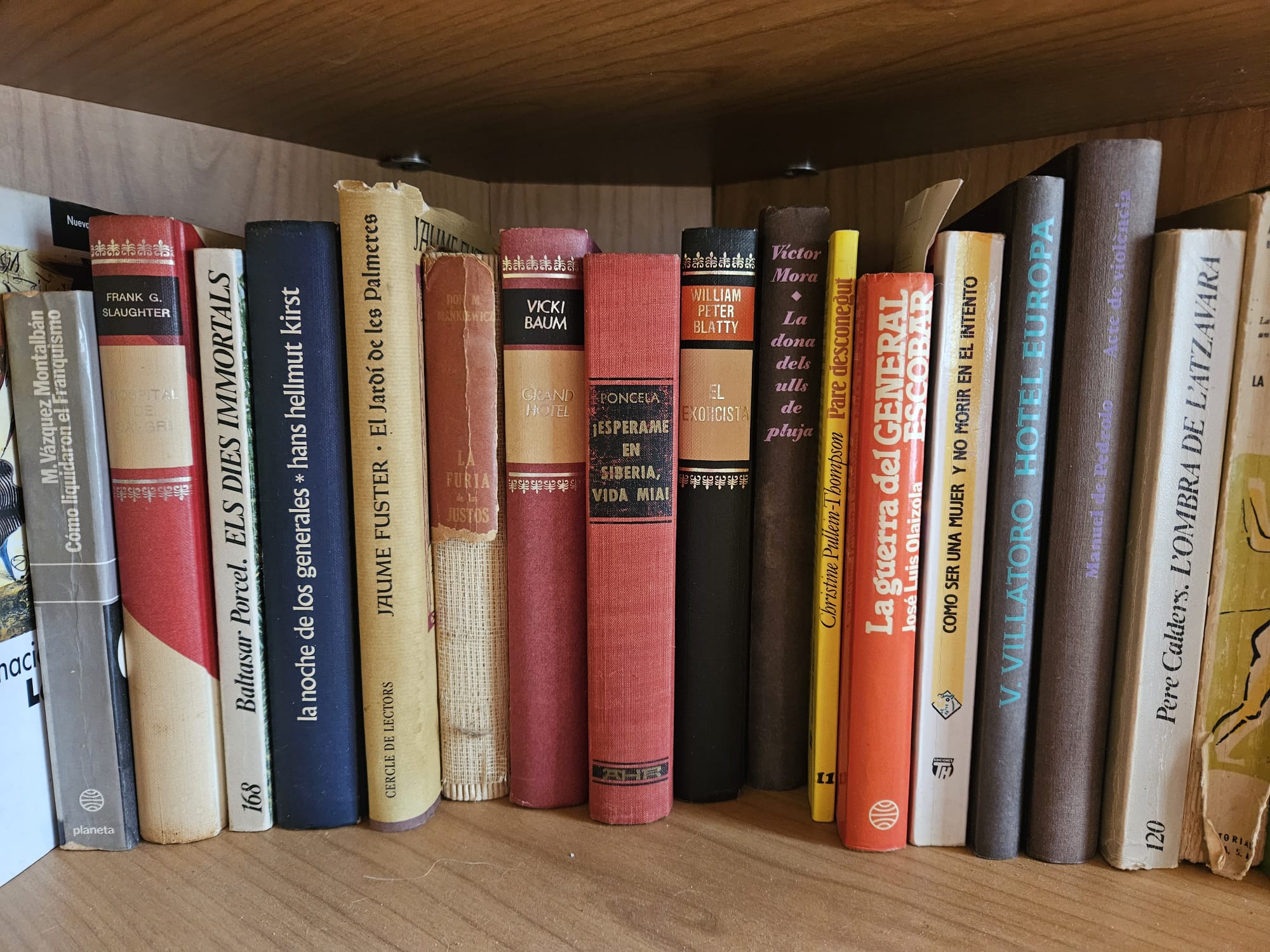
One book
“Purge”, by Sofi Oksanen
This gem of a book by Sofi Oksanen made an impression on me, for the fortitune of their main characters, Zara and Aliide. And the darkness that the book conveys masterfully.
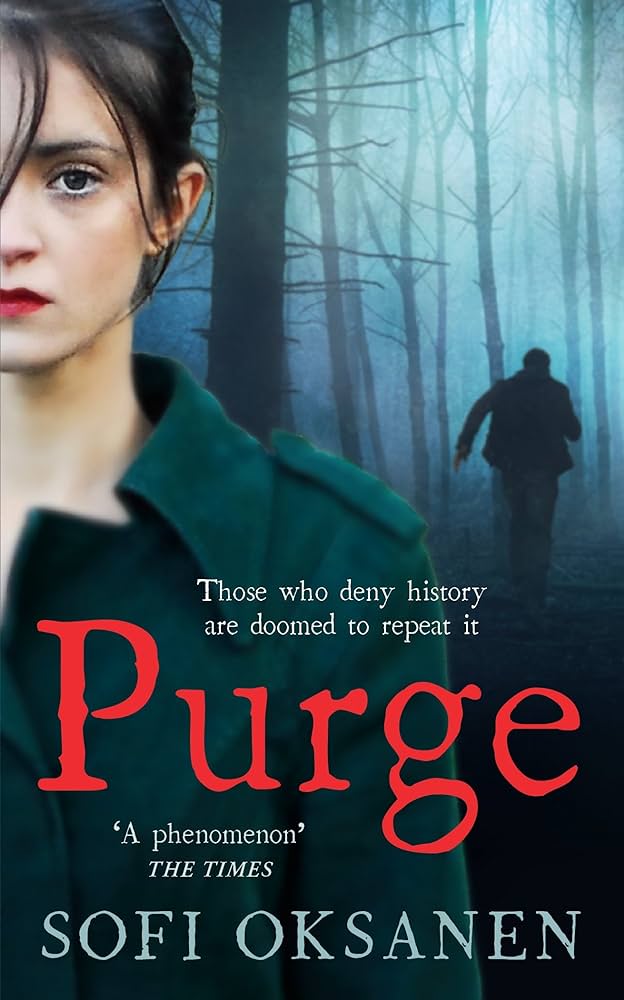
Plot Summary: When Aliide Truu, an older woman living alone in the Estonian countryside, finds a disheveled girl huddled in her front yard, she suppresses her misgivings and offers her shelter. Zara is a young sex-trafficking victim on the run from her captors, but a photo she carries with her soon makes it clear that her arrival at Aliide’s home is no coincidence. Survivors both, Aliide and Zara engage in a complex arithmetic of suspicion and revelation to distill each other’s motives; gradually, their stories emerge, the culmination of a tragic family drama of rivalry, lust, and loss that played out during the worst years of Estonia’s Soviet occupation.
